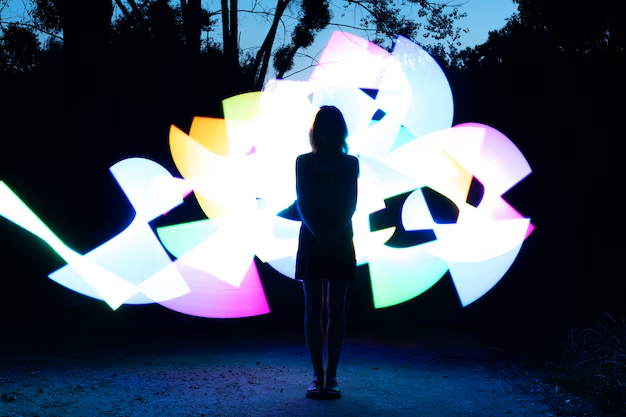Photography is an art that brings moments to life, and at the heart of great photography lies the art of composition. Among the elements that significantly influence composition, light and shadow stand out. These two natural forces have the power to define the mood, tone, and focus of an image, making them essential tools for any photographer. In this article, we will explore how light and shadows contribute to photographic composition and how understanding their relationship can elevate your photography.
The Role of Light in Photography
Light is the most fundamental element in photography. It is the driving force behind the creation of an image, as it illuminates the subject and defines its features. The quality, direction, and intensity of light can dramatically change the outcome of a photograph. For instance, soft, diffused light creates a gentle, flattering effect, while harsh, direct light casts sharp shadows and highlights, adding drama and contrast.
There are two types of light to consider: natural light and artificial light. Natural light, such as sunlight or moonlight, has a dynamic quality that changes throughout the day. Early morning or late afternoon light (often called the “golden hour”) provides a warm, soft glow that can create a magical atmosphere. Artificial light, on the other hand, allows for more control but lacks the subtleties and mood that natural light often offers.
The Power of Shadows
Shadows are often seen as the opposite of light, yet they are just as important in composition. Shadows add depth, texture, and dimension to a photo, making the subject feel more three-dimensional. When used correctly, shadows can guide the viewer’s eye, create a sense of mystery, or emphasize certain parts of the composition.
Shadows are also incredibly useful in creating contrast. By positioning the light source in such a way that it casts long, dramatic shadows, photographers can accentuate the shapes and outlines of objects, transforming them into abstract or artistic shapes. The interplay between light and shadow can also evoke specific emotions, whether it’s the warmth of a sunlit afternoon or the coldness of moonlit darkness.
Composition: How Light and Shadows Work Together
Understanding how light and shadows work together is crucial to mastering photographic composition. Framing and perspective can be enhanced by using light to highlight certain elements while allowing shadows to fill in the rest. The rule of thirds, for instance, can be applied using the contrast between light and dark areas to create a balanced composition.
By positioning light at different angles, photographers can manipulate shadows to lead the viewer’s eye toward the focal point of the image. Additionally, experimenting with different exposure settings can help control how much light or shadow is present in an image, ensuring that the final result conveys the desired mood.
7 FAQs About Light, Shadows, and Composition in Photography
- How do I control the intensity of shadows in my photos? You can control the intensity of shadows by adjusting the light source’s distance from the subject, changing the angle of the light, or using diffusers to soften the light.
- What time of day is best for capturing natural light? The golden hour, shortly after sunrise and just before sunset, provides the softest and most flattering natural light.
- How do shadows contribute to the mood of an image? Shadows can add a sense of mystery, drama, or calmness, depending on their length, direction, and intensity.
- What is backlighting, and how can it enhance composition? Backlighting occurs when the light source is behind the subject, creating silhouettes and emphasizing shapes and outlines.
- Should I always avoid harsh shadows in portraits? Harsh shadows can create dramatic effects in portraits, but they need to be carefully controlled. Use a soft light source or reflectors to soften them if desired.
- How can I create depth using light and shadow? By placing light at different angles and allowing shadows to fall on the background or foreground, you can create a sense of depth and dimension.
- How do I balance light and shadow in my photos? You can balance light and shadow by adjusting exposure settings and considering the placement of the light source, ensuring that both highlight and dark areas contribute to the overall composition.
Conclusion
The relationship between light and shadows in photography is powerful and transformative. By understanding how these elements affect the composition, photographers can create images that are visually compelling and emotionally resonant. The key is to experiment, observe, and let the natural interplay between light and shadow guide your creative process.

